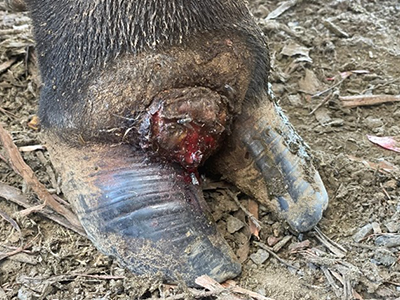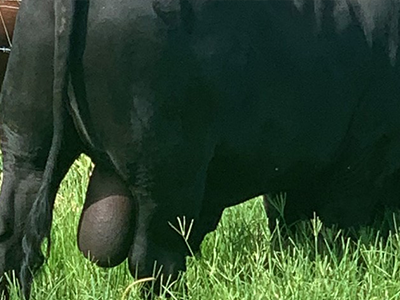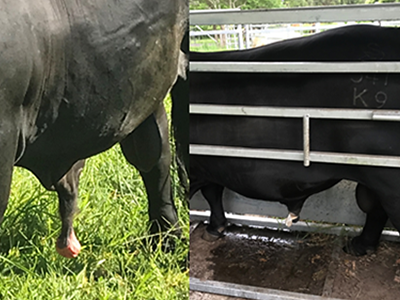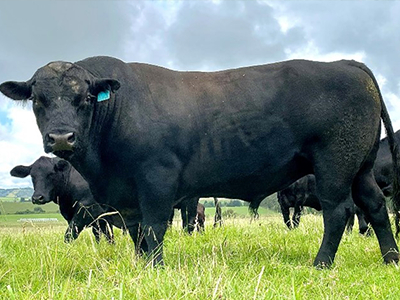Broken Bulls
Considerations in the breeding herd
Prolonged wet conditions in followed by dry hot periods and patchy storms can lead to a bad season for ‘bull breakdowns’. Whether a bull experiences weight loss, lameness, infection, or direct injury, it is important to understand what options are available to support animal welfare and minimise production and economic losses.
Investigating a potential ‘broken bull’
The first questions to consider while investigating a poor-doing or potentially “broken bull” include:
- What is the possible cause?
- How bad is the injury or infection?
- Is this likely to reoccur seasonally?
- Could he recover fully for future mating?
- Can he be sold? Is he fit to load?
- How to maintain optimal animal welfare?
Fertility considerations include the bull’s semen quality and quantity, his physical strength, and his overall fitness.
Often, experienced managers can clearly assess the extent of an obvious injury or illness, but many of the injuries being seen this season require a veterinary examination to determine the true extent. Communication with your veterinarian is important for making decisions on treatments, the animal’s fitness to load for transport, or in some cases, euthanasia.
Factors of bull break downs
Identifying the possible causes or influencing factors is important for highlighting management flaws and improving prevention strategies.
Age or genetics also influence bull break downs and may correlate to future reinjury risks. Younger bulls have more excitability and can, in some cases, be ‘clumsy’ when serving cows. This can cause lameness or injury to their reproductive organs. Older bulls can experience joint pain and arthritis in their legs and hips, leading to ‘breaking down’.
Management-related factors which may cause injury or disease include:
- contaminated yards or paddocks with wire, sticks, sharp rocks, holes, or rubbish
- poor water quality or water access
- poor grazing or nutritional management
- stocking density and limited space increasing fighting and aggression
- yarding in confined, muddy, fly-burdened, and/or high heat load conditions.
Other injuries or diseases may arise from environmental and climatic events such as drought or flooding which can’t be fully accounted for in management practices alone.
Option 1 – Treatment
To ensure animal welfare is maintained and the likelihood of a successful outcome high, treatment usually requires veterinary guidance or prescribed medicines.
Be realistic in your expectations:
- The best outcome will lead to the bull being fully recovered and able to breed in the future.
- A lesser outcome may mean that treatment is just enough to improve and maintain his welfare until sale (see next page).
- Many treatments are not excessively expensive and, even if he must be sold, his value may exceed treatment costs.
- Where treatment costs surpass salvage value, euthanasia on welfare grounds under veterinary guidance may be the best outcome.
Other factors to consider include:
- Some bulls can become aggressive when ill or injured meaning treatment may not be easy so appropriate facilities are needed (eg, a vet crush).
- High heat load or infectious diseases, such as ephemeral fever (three-day sickness) or foot abscesses, can cause increased body temperatures. This may impair sperm production, resulting in infertility for several weeks or months.
- Some infections or injuries such as lameness or pinkeye may cause irritation, pain and increased nutritional and energy costs, resulting in poor sperm production. The bull may be unfit to serve cycling cattle and have reduced libido due to ‘sulking’.
- Using a backup bull for your herd while administering treatment and rest from mating is ideal for recovery.
Once the bull has recovered and prior to reintroducing him to the breeding herd, a complete reproduction test is recommended to examine the bull’s ability to produce adequate amounts of healthy sperm. A veterinarian should perform these tests.
While a veterinary visit may be costly, acting quickly on treatment in response to injury or infection will mitigate losses associated with bull health and his recovery period, and the breeding herd’s productivity.

Figure 1. Lesion above hoof cleft on Angus bull, causing lameness. Mechanical injury possibly from rough or slippery ground or wire in the paddock. Bull underwent antibacterial treatment prescribed by veterinarian and the wound was cleaned daily. The bull was removed from breeding herd for treatment, rest, and recovery. Bull is now recovered, ready for joining next season.

Figure 2. Swelling of testes from trauma. Trauma and swelling occurred overnight, possibly a result from fighting. Veterinarian confirmed no twisting of testicles, which presents the same symptoms. Treatment involved prescribed coarse of anti-inflammatories and isolation for rest. Eight weeks after resolved swelling, semen testing was conclusive with 95% motility and 90% morphology. The bull has continued joining successfully.
Option 2 – Sale
You may consider selling your bull if:
- he doesn’t recover to efficient reproductive health
- the risk of future breakdowns is high
- the breakdown is genetically related such as a conformation weakness which you want to avoid in your breeding herd.
If your bull fully recovers after treatment, you will be able to sell him on via a stock agent or to directly to a processing plant. It is important to communicate honestly with buyers about the animal’s health history and they may request a semen test before purchase.
For a recovering bull to be considered fit to load for transport, you should also consider withholding periods and risks with antimicrobial resistance. MLA provide a guide for assessing if your animal is fit to load.
It is important to note that saleyards do not support the sale of bulls that are lame, blind or have other major injuries such as broken sheath.
As each processing plant has their own terms and conditions for consignments, it is important to maintain communication and confirm a solution before sending an animal for slaughter. This ensures optimal animal welfare and safety for human consumption.
This may involve:
- direct contact with a plant’s livestock manager or a plant’s livestock buyer
- requesting for their consignment guidelines
- sharing videos and photos
- including communication with veterinarians.
Prior to slaughter, the bull may need to undergo treatments such as a pizzle band or circumcision to meet the requirements for consignment. Some treatment practises may be limited by veterinarian skillset, on farm facilities, economic costs, and personal safety.

Figure 3. Brangus bull with prolapsed sheath. Bull was found during joining. Veterinarian confirmed massive bruising, likely a result of being trodden on or falling awkwardly after serving. Anti-inflammatories and antibiotics were prescribed, along with washing and ‘cone’ strapping (right) daily for 14 days. Within 10 days, significant improvements were observed. Strapping must be firm but not limiting his ability to urinate. Bull regained condition and was sold for cull due to high risk of reinjury.

Figure 4. Recovered Angus bull in breeding herd. Six weeks prior to photo, bull showed early symptoms of pink eye and appeared “sulky”. He was removed from herd for treatment and replaced by another bull. With prompt treatment, bull fully recovered in two weeks and reintroduced to the breeding herd. Treatment involved two treatments with Opticlox Eye Ointment and application of an eye patch for protection.
Option 3 – Euthanasia
If your bull is not fit to load and is very unlikely to regain health, animal welfare should be considered and euthanasia or on-farm cull for animal food should be carried out.
Whichever decision you make for your livestock or farming system, you must be confident that it is the best decision at that time.
For more information
You may contact your nearest Local Land Services office on 1300 795 299 or find them on our contact page.